Ruben Amorim: Tactics, Recruitment & Coaching Style Of Manchester United’s New Head Coach
Manchester United have a new manager, and he goes by the name of Ruben Amorim. The Portuguese coach, who at one stage was the most expensive manager in football when he signed for Sporting from his former club SC Braga, will assume his position as the spearhead of the world’s biggest club after the international break, with his first game being against Kieran McKenna’s Ipswich. McKenna, famously, has been another person of interest internally at United when it comes to the position of manager, but INEOS decided recently Amorim was the man and moved quickly to get a deal done.
Those behind the scenes at Sporting were not under any impression that Amorim would leave mid-season up until the recent news. Players felt their manager was focused on the task at hand, which was delivering another title to Lisbon. Amorim became the first manager to win Sporting the league title in 19 years in 2021 and followed that in with their second in 2024 last season. Those two titles were the Leões 19th and 20th in the competition.
Interestingly, Amorim could have won the club their 21st league title this season if he had stayed on; this is the exact same task he will be asked to perform at Manchester United if he is to be successful. The cry of 20 times 20 times Man United has been looming around Old Trafford for more than a decade, but it seems like its about time that changed to 21 times 21 times Man United, even if it is a bit less catchy sonically.
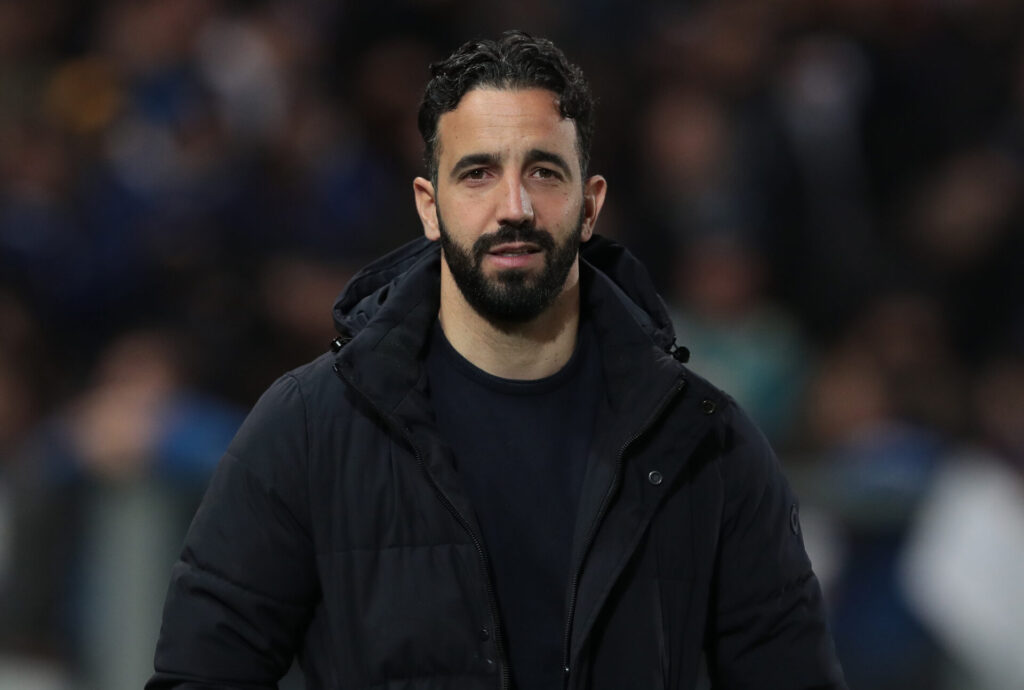
Amorim: The Man Behind The Scenes
Amorim is the man at Sporting in nearly every aspect of the word. The 39-year-old is one of the figureheads in recruitment, working in tandem with Hugo Viana and the scouting team to ensure the right profile of player is brought in to carry out his system. The former Braga man plays a 3-4-2-1 formation, which can also be looked at as a 5-3-2 depending on how you view football. In possession, at times, it becomes a 4-2-2-2, and if they are playing against a team that they have the ability to push back, the three centre-backs will spread out, aiming to break the lines and find the two players in front of the centre-forward in the pockets.
The new United man is in charge of how the team is built at Sporting. Upon arrival into the club, he took charge of reshaping the team at his disposal, identifying the correct types of players, and handing them over to Viana, who was in charge of negotiations.
It will be interesting to see how this dynamic changes under INEOS. United had previous interest in Viana, but Manchester City will be his destination after the Red’s chose to go down the direction of Omar Berrada and Dan Ashworth. Erik ten Hag remained part of the recruitment process this summer, but there was a general sense he did not have the full control he had in the past. Ten Hag had to be convinced on the signing of Manuel Ugarte, with the Dutchman wanting to keep hold of Scott McTominay instead, as well as bringing Sofyan Amrabat back to the club after his loan.
Amorim is not expected to have anywhere near the control he had at Sporting during his period at Old Trafford, but he will be anticipated to be part of the recruitment process, working alongside INEOS. The signing of Manuel Ugarte this summer looked like it was done with Amorim in mind, but the true decision to sack Ten Hag came after the Liverpool and Spurs games. The Portuguese manager was spoken to this summer, but the timing ended up not being right for both parties. The Liverpool game against Arne Slot was the beginning of the end internally at United, and the decision was as good as made after the Spurs performance, regardless of Bruno’s red card.
Transfer control was something Amorim demanded upon his arrival from Braga to Sporting. All the prime targets have been Amorim’s, with Victor Gyokeres a huge example of someone identified by the former Benfica man in tandem with the scouts. Viana closed the deal in the negotiations.
Amorim’s relationship with Viana certainly raised the profile of the current Sporting director and future Manchester City director. The power the manager had internally at the Lisbon club was so impressive and powerful that there are doubts surrounding how Viana could work outside at another club. The pair’s relationship was a perfect blend, meaning the separation could affect both in the future, which may be an area of concern.
The other side of the coin, however, could be that Amorim develops a similar relationship with Dan Ashworth. INEOS will have their own ideas on recruitment and how they want the team to look, but as always, that has to also fit into the way the manager sees the team playing on the football pitch. During the last number of seasons since his arrival in Lisbon, the 39-year-old has overseen the signings of Ousmane Diomande, Victor Gyokeres, Pedro Porro, Matheus Nunes, and Pedro Goncalves. All these players have been successful at the club, and the ones who have left have gathered a huge sum of profit due to the transfer fee given to Sporting for their departures.
Ousmane Diomande may be someone to keep an eye out for in the future at Manchester United. The incredible Ivorian centre-back has been on United’s radar for a long time, and with the arrival of Amorim into the club, it may present an opportunity to bring him in. Diomande has dreams of playing for Europe’s elite clubs in the Champions League and eventually winning the competition. It’s also worth mentioning the young centre-back is someone Amorim has a huge amount of trust in. Diomande is one to watch, especially with the new system being implemented at Old Trafford anticipated to be a 3-center back formation.
Diomande’s idol growing up was Cristiano Ronaldo, meaning he does have ties to watching Manchester United as a young boy growing up in the Ivory Coast. Talks took place between United and the player in the summer, but nothing concrete materialised at the time, with the Red’s instead moving for Leny Yoro and Matthijs De Ligt.
Speaking to Sam Fonseca, creator of the Sporting CP fan page All Things Alvalade, it was nice to get an insight into how Amorim works internally. United fans have stamped home the insistence that the next manager has to have a focus on youth if they are to succeed at the club. The academy at Carrington, spearheaded by Nick Cox, Jason Wilcox, and the recruitment side with Luke Fedorenko, is the strongest it has ever been.
Amorim will need to keep an eye on this during his tenure, but the good news is that he does have a history of promoting youth into the first team. As told to us by Sam speaking to us recently, he had this to say about Amorim’s focus on developing the youth.
“Of course, what most United fans will want to hear is that he emphasizes youth development, promoting young talents from the academy. It doesn’t matter what age you are; if you can contribute, you can play. A good example of this year is Geovany Quenda, who was 17 years old and had his debut against FC Porto of all teams, which he played 120 minutes in. Other examples are Inacio, Nuno Mendes, and Eduardo Quaresma. All being under the age of 19 when they made their debuts.“
Coming through the ranks at United is a plethora of talent that he will be expected to help nurture. The likes of Bendito Mantato, Jim Thwaites, Amir Ibragimov, Chido Obi-Martin, Godwill Kukonki, Harry Amass, and Shea Lacey, as well as many, many more, are destined for the first team, but there is a huge feeling INEOS have hired the right man to develop this incredible crop of talents.
Changing The Mentality At Sporting:
Amorim will need to switch United from a middle-of-the-way side hoping to get into the top four to a woken giant hunting down the pack that have been making a mockery of them for years. Famously, when speaking after winning their second league title in 19 years recently, Amorim had this to say, which will be music to the ears of the United fans dreaming of the success of yesteryear.
“”They said we only win titles every 18 years, they said we only won the title [in 2020/21] because we didn’t have the fans & they said we will never be two-time champions again. Let’s see… [*mic drops*]”
The way the incoming United manager will have walked into Sporting will be a bit similar to how he walks into United. A struggling team, with a number of players perhaps not up to the level required, if not so much in terms of quality, but in regards to mentality. Sam also spoke to me about how the fanbase at Sporting were not quite behind the players when Ruben arrived to the club, which is something he completely transformed over the next four seasons, winning two league titles.
Amorim is ruthless. He demands a lot in training, which is similar to Erik ten Hag. Discipline is a major aspect of his coaching, and he likes to apply a “no dickhead” policy, which is something INEOS have recently been rumoured to be implementing in their recruitment policy.
There is a belief amongst those close to Sporting that Amorim can win the league in the next few seasons, but there is a continued reference towards the 39-year-old needing time. This is an INEOS hire. This will be their man. There is a belief he will need to be backed accordingly, with players signed for the club that fit his system, which means certain players at the club currently will have to go out the door to make way.
Getting rid of fan favourites is not something Amorim has been afraid of in the past. It was highlighted to me the fact that he has made some bold choices in regards to getting rid of players that the fans will have been hugely receptive to prior to their departures.
The likes of Islam Slimani, Mathieu, formally of Barcelona, and Stefan Ristovski were all sold by Amorim due to poor work ethic, which will send a message to the Manchester United players currently fighting for their futures at the club. A lack of application will not be tolerated under the new manager, but that is not too dissimilar to the situation under Erik ten Hag, who banished Jadon Sancho and Cristiano Ronaldo during his time at Old Trafford.
Record Against The Elite:
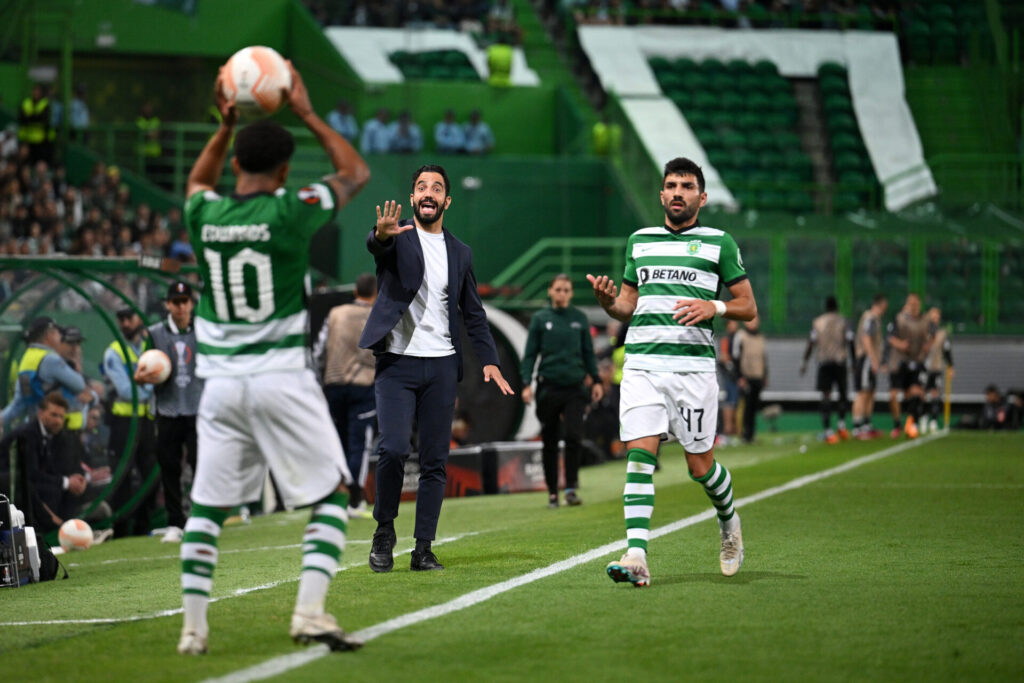
One thing United fans will be hoping to see improve is the reaction from the side when the team goes one nil down. In recent months under Ten Hag, the team has crumbled, particularly away from home, when they conceded the first goal.
Since his first game in charge, the one team the new manager has struggled against more than any other side has been Porto, losing eight games. They have been the title rivals for Sporting during all four seasons that Amorim has been at the club, and in that period he has won just five games, losing eight.
Outside of that, he has beaten Benfica six times, losing four, and also boasts a positive record against Braga. Amorim will need to win the bigger games if he is to hit the ground running at United, with his first big clash coming against Arsenal after the international break.
Sporting have been praised for their defensive solidity under the former Portuguese international. So far this season, the side from Lisbon have conceded just 2 goals in the Portuguese league. In his first season, Amorim’s team conceded just 20 goals. Since then, the most goals they’ve shipped in a campaign has been 32 in a rare off season during the 22/23 campaign, which saw his team drop to fourth in the league.
They returned fire the season after, winning the league by ten points, conceding just 29 goals. Since Amorim’s first full season in charge in the 20/21 campaign, Sporting have conceded 106 goals. Manchester United conceded 101 in the 20/21 and the 21/22 seasons alone. In fact, since Ruben Amorim’s first season in charge of Sporting, Manchester United football club have conceded 213 goals, 107 more than the Portuguese side in the same time frame.
Against Premier League opposition, Sporting have been impressive. He’s faced Pep Guardiola’s City twice, losing once and drawing once. On the two occasions he has come up against Mikel Arteta’s Arsenal, he has avoided defeat, knocking the Spaniards side out of the Europa League in the 22/23 season.
Opinion From Portugal:
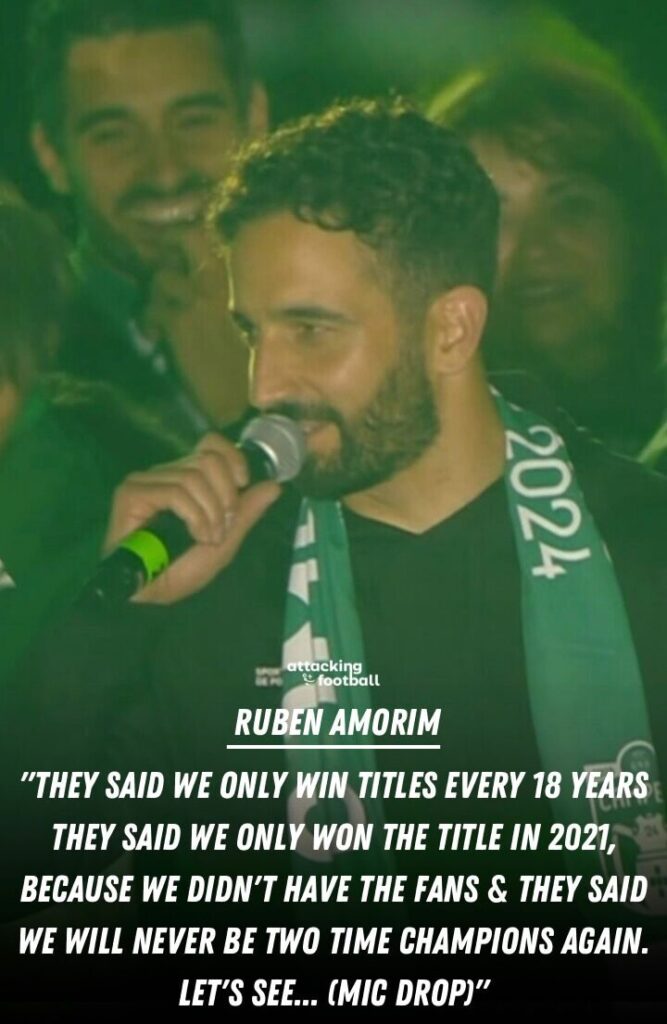
There is a belief amongst those close to Sporting that Amorim can win the title with United. Joao Castro has detailed that Amorim has all the tools to bring United back to the very top, but he needs time. INEOS will need to give him that time, and failure to do so will result in another failed cycle for a manager at the club, which is the last thing anybody wants after Erik ten Hag’s departure.
Success for Amorim will depend on the right backing from the new board he will be working under. Amorim will be aiming to try and close the gap to Liverpool, City, and Arsenal in the remainder of this season and the next, and that simply cannot be done unless INEOS bring in the right profile of players. Time, again, has been something those with knowledge of Amorim have repeatedly driven home when speaking about the potential arrival of the coach in England. Better players, with all due respect, are also needed. United have a good core squad, with several young, talented players, but more is needed for the club to have any chance of being part of the elites again.
If Amorim has time and the fans as well as the board are patient, there’s an extreme belief Ruben Amorim can be the man to bring United back to the promised land again.
The reason the 39-year-old is bringing his coaches with him is because he loves the idea of having structure around him. This is why he has been so successful at Sporting, and the people internally at United need to ensure they try and emulate that structure he had at Lisbon as best they can.
A job like Manchester United, the rebuilding process—that is the bread and butter of the former Braga man. He lives for a challenge such as this, so the prospect of reshaping the football club does not phase him what so ever. Again, patience, although it’s not something you can associate with Premier League management, is key. United will have bumps along the way under their new manager, and they are not going to be the best side in the league overnight. The process to get there takes time and sacrifice on the training pitch, as well as clever decisions in recruitment.
In regards to Amorim’s coaching staff, they are a unit he has been with since his very beginning in management. Carlos Fernandes is a young coach at just 29 years of age, but he has a high reputation in the game already. Amorim has gone on record to suggest Fernandes will one day be a much better manager than him, which is high praise for someone who is currently one of the most sought-after managers on the planet.
He has been alongside Amorim since Casa Pia and was a part of the two title-winning sides. Alongside him is Adelio Candido, another young manager at just 28 years old. This will be a young, vibrant team behind the scenes at Manchester United, and they will have to demand the respect of a dressing room that doesn’t hand it out willingly.
The Tactical Side:
Tactically, Amorim represents a different system to Erik ten Hag, with some similar principles. The Portuguese manager likes to be dynamic and vertical in possession, with directness certainly a key aspect of his game plan with Sporting, particularly against better teams in the Champions League. In the Portuguese league, where his team is largely dominant against weaker opposition, his focus is more suffocation in the final third, situating players in the half space and also utilising his two wingbacks in high and wide areas to create chances. This either comes through isolating the wingbacks with the opposition full-backs or simply creating enough space for them to have a crossing opportunity, which is usually music to the ears of Victor Gyokeres in the box.
The 3-4-3 formation is Amorim’s favourite, sometimes becoming a 3-4-2-1 with two inside forwards behind the main centre forward. The 39-year-old likes his centre-forward’s to be physically dominant, which may mean we see Rasmus Hojlund bulk up in the coming months as he aims to keep up with the demands of the new system. The 3-back formation is often associated with defensive-minded managers. The successful styles we’ve seen with three centre backs in the Prem have come from Antonio Conte and Thomas Tuchel, with both being viewed more for their defensive work than their attacking styles due to their stints in the league.
Amorim is different. The three-back formation for him is a way to impose control over the opposition while also being flexible to sit back into a defensive shape. One early facet within seconds of watching the team in the game against Lille was the centre-back pushing into midfield when the goalkeeper had the ball, allowing the other two centre-backs to push wide, forming a 3-in buildup with the keeper.
This stretches the opposition’s press and gives Sporting an extra option in midfield, which can aid progression through the lines at times if they choose to go that route. Deep in progression, the two pivot players drop to give extra options for the centre-backs. This aspect of the build should be easier for United to adjust to, as towards the end of Ten Hag’s reign they began to build with two men in midfield and three at the back.
When the opposition is in a more settled block and Sporting has moved up the pitch, there’s a clear 3-2-5 in possession. The centre-backs stretch as wide as they can to try and make it as difficult for the other team to press as possible, and the inside forwards take up positions between the lines in the deeper half spaces to try and collect the ball and move forward.
The wingbacks are a major part of the system. The overlaps and underlaps create constant relenteless rotations and opportunities for Amorim’s side in possession, but as seen here, they don’t push extremely high up the pitch in the early stages of progression, always wary of the fact a turnover could happen at any second, which would leave the team vulnerable.
The centre-backs are a major part of the system. Their ability on the ball is imperative, as it entails passing the ball around between them at the back, trying to create angles and avenues to break the lines and find the inside forwards situated in the half spaces through them. This can be seen in the below image seconds after the one above, as they move the Lille press around to create that line-breaking opportunity.
Out of possession, it can become a 5-2-3 when sitting in a block and allowing the opposition to have the ball. This can be more visible in the Champions League as the level of teams Amorim’s side are facing increases. It would differ in the Portuguese league due to the fact Sporting are expected to dominate most teams within that league, and as much as he likes defensive structure, Amorim is also not afraid to press high and suffocate the opposition.
Repeated Patterns:
One thing United fans will be happy to hear is that the full-back does back the press when he needs to, which was a major critique thrown at Erik ten Hag during his reign, as the decision not to do this with the full-backs left United’s pressing structure incredibly lopsided at times. Amorim sides will need to be comfortable in the buildup, as it requires bating the opponent to step onto them at times to again create them avenues to play through between the lines.
At times, the pivot player can drop in beside the central centerback, and the two wide centerbacks push on as almost full-backs. This leads to almost a 2-3-5 buildup, which again can aid progression, particularly if they aim to create triangles down the left and right hand sides by pushing the wingback on, dropping the inside forward deeper, and incorporating the wide centerback into the attack.
One area where Amorim and Ten Hag have similarities is the marking system. The Portuguese coach does not commit fully to a man-to-man or a zonal system, instead prioritizing a mix between the two. The pivot players are usually tight to their men, pressing them into the front line if need be to try and limit the amount of balls that go into them. The front three mark the area or the space, and there is a m2m approach at the back but not for every player, with the players swapping and deciding that between themselves depending on the game state.
The centre-backs also like to follow the forwards into the middle of the pitch; this is in keeping with the m2m approach in that area, which helps again stop the ball being played beyond their midfield into free space between the lines. It’s another issue Manchester United had under Erik ten Hag, and it’s another solution Ruben Amorim will be hoping to bring to Old Trafford.
As previously mentioned, Sporting are not a solely defensive unit, far from it. At times they press with five or six players in the final third, and there are occasions when the centre-backs will recognise a pressing trigger and step into the final third to try and win the ball back from the opposition. There was an example of this against Lille in the UCL this season when Sporting had eight players inside Lille’s half, with Quenda the right wing-back pushed high and wide on the Lille left-back and Zeno Debast joining the press, eventually winning the ball back from Lille to complete a successful counterpress after Sporting had lost the ball seconds before.
Sporting also likes to be aggressive with their wide centre-backs when in possession, as they aim to pin the opponent back in their own half. The two pivot players are always the link, and the front five push right up onto the last line. The two wide centre-backs are always available in possession if Sporting perform this tactic right, allowing them to always have at least two spare men looking for the ball at any given moment.
As mentioned at times, which will be a huge piece of good news for Andre Onana, the keeper is tasked with being part of the build up. The central centre-back will push into midfield, and the keeper will become part of the three in the build up. This frees up the wing-backs more often than not as the opposition will be more wary of stopping the ball going through central areas due to the overloads provided by Amorim’s side in that area of the pitch. That box in the middle of the park traps the opponent when pressing, which can leave the two wide centre-backs as options in possession, as well as the two wing backs as outlets outside the press.
Channel runs from the striker are vital in Amorim’s system. It’s not possession around the back for the sake of possession. If his team has a chance to go vertical and get up the pitch through a direct attack by using the long ball into Gyokeres in the channel, they’ll take it. His hold-up play is elite, and they can usually bounce the ball off him or win the second ball, which allows them to spring the attack on the team they’re playing immediately and try and score that way as opposed to playing through a press and risking losing the ball in the build.
Again, as the game went on against Lille, that one common theme in the press was the zonal front three and the man marking pivot, no matter where on the pitch their men were going to try and get the ball.
The overall goal of the press for Sporting is to push the opposition wide, which works in their favour due to the fact the wingbacks are already so high up the pitch. As visible in the screenshot below, the fact the line is so high allows the defence to cover all bases. The m2m system with the centre-backs stops the ball being played between the lines, and the willingness of the wing-backs to push forward to the opposite full-back or winger pushing higher allows Sporting to have a handle on the balls into wide areas too.
Zonal, and man marking. It’s a potent mix. You can either go full man to man like Gasperini’s system and try and limit teams progressing through that style, or go with Amorim’s system, which is the best of both worlds. Individuality and dragging individuals out of position is a key factor in unlocking a man-to-man pressing system, but it’s more difficult to do this with a hybrid system that encorpotates man-to-man pressing. If the opposition drags the man marking them out of position, particularly in the central defensive area, that gap can be plugged by the player next to him doing a zonal job and marking space as opposed to being tied to a player.
This makes it difficult to play through Sporting and also difficult to work the ball wide due to the positioning and intensity of the wingbacks.
The free-role nature of the two inside forwards can create avenues of opportunity in central areas of the pitch. This comes particularly when the three combine, utilising triangles to pry open their opponents, with Gyokeres again often being the fulcrum of the attack. The ball up to the Swede very often comes back, which more often than not creates space for the onrushing attacker to drive into. That up-back-through scheme that’s become so famous in modern football.
Another important aspect is the inside forwards becoming centre-forwards when Gyokeres drops deep. Due to the fact Sporting often looks to go direct and find Gyokeres in these channels, he can sometimes pick the ball up a bit deeper, dragging defenders with him as he does. This can open up spaces for the inside forwards to take up in his absence, which can create uncertainty in the back line. Second-man runs in these scenarios can create chances for Sporting, which is a pattern that is commonly seen in their attacks.
Going back to the idea of the man-to-man system, here is a clearer example of how the defenders act when the opposition have the ball inside their own half. Truthfully, Morita is too deep in this instance and has not gotten into the role he should be in, which is pressed up to the oppositition’s pivot player. But the clear signs of instructions for the two wide centre-backs to go man for man and the central centre-back to remain zonal are visible.
If a team plays with a centre-forward down the center, the marking roles are subject to change. The players mark the zones until a player comes into them. If the zone remains empty, they continue marking the zone, if a player occupies the zone, they mark the player.
The repeated patterns are similar game to game. Here’s Sporting against Porto pushing Diomande into a midfield position 23 seconds into the game, showcasing the instructions Amorim gives his players before they step foot out onto the pitch. These patterns are drilled in training, and there is a clear connectable style on match day. This will be music to the ears of United fans, who will feel they have not had a style for a long time.
From the above picture, numerical advantage is important in football, particularly when the manager is aiming for his team to win the ball back. The more players you have situated around the ball, the harder it is for the other team to keep it. This obviously does leave your team vulnerable to switches of play, but if the press is aggressive enough and structured in an expert fashion, you will win the ball in these scenarios more times than you don’t.
Again, more examples of the patterns and consistency of the patterns of play. Here’s that zonal 5-2-3 press, with the man marking pivots.
All in all, Amorim’s style is an intense attacking ⅗ at the back formation with a strong defensive structure to go along with that. Sporting like to break lines and utilise their wingbacks to create chances, and a huge portion of their attacks also come from counter-pressing and natural pressing scenarios. The striker is a huge factor in an Amorim system due to the tendency to at times go direct. The channel runs as well as the one-touch link-up is something Rasmus Hojlund will need to prioritize in his development. If he can do this, the ceiling he’s currently at will rupture, creating a brand new one that teams will struggle to contain.
The clear principles are intensity mixed in with intelligent positional play and a clear direct approach when pressing and sitting in a block. Work ethic is vital in this system. Two pivot players who can cover ground and have knowledge of man marking as well as knowing when and why to press are also imperative. Furthermore, these two pivot players need to be comfortable with their backs to goal as well as facing play.
This picture shows the commitment of the two pivot players to their man marking duties. Morten Hjumland following his marker back into the back five makes it a back six, which does leave a man free in midfield. This is rectified by Gyokeres blocking the ball into his path, which then forces Porto long, resulting in a turnover of possession for Sporting.
Perhaps the most vital parts of the system, however, are the five players in defensive positions. In possession, the defenders need to be on point with their passing and intelligence in order for the system to thrive. The three of them need to be solid in possession and also cultured with breaking the lines through to the inside forwards, who more often than not have a free role.
The aggression of the two wide centre-backs in settled possession allows Sporting to control games but also leaves them vulnerable for counterattacks due to how high the rest defence is. This is the price you pay in elite football to be a brave team, however, and United will need to overcome their mentality issues to be able to play this system to a high level.
Again, here is the same system as the Lille game in deep possession in the Porto game. Wide centre-backs, a double pivot, and two inside forwards either side of a channel running centre-forward, flanked by two willing wing-backs. A clear system. A clear style. A clear alignment of patterns in different games.
Ruben Amorim has all the tools it takes to be a successful manager at Manchester United, but he needs time. Time, support, financial backing, and a raucous Old Trafford. If he can be given that, the football club that hasn’t roared in a decade may just produce a roar that shakes the Premier League to its very core.


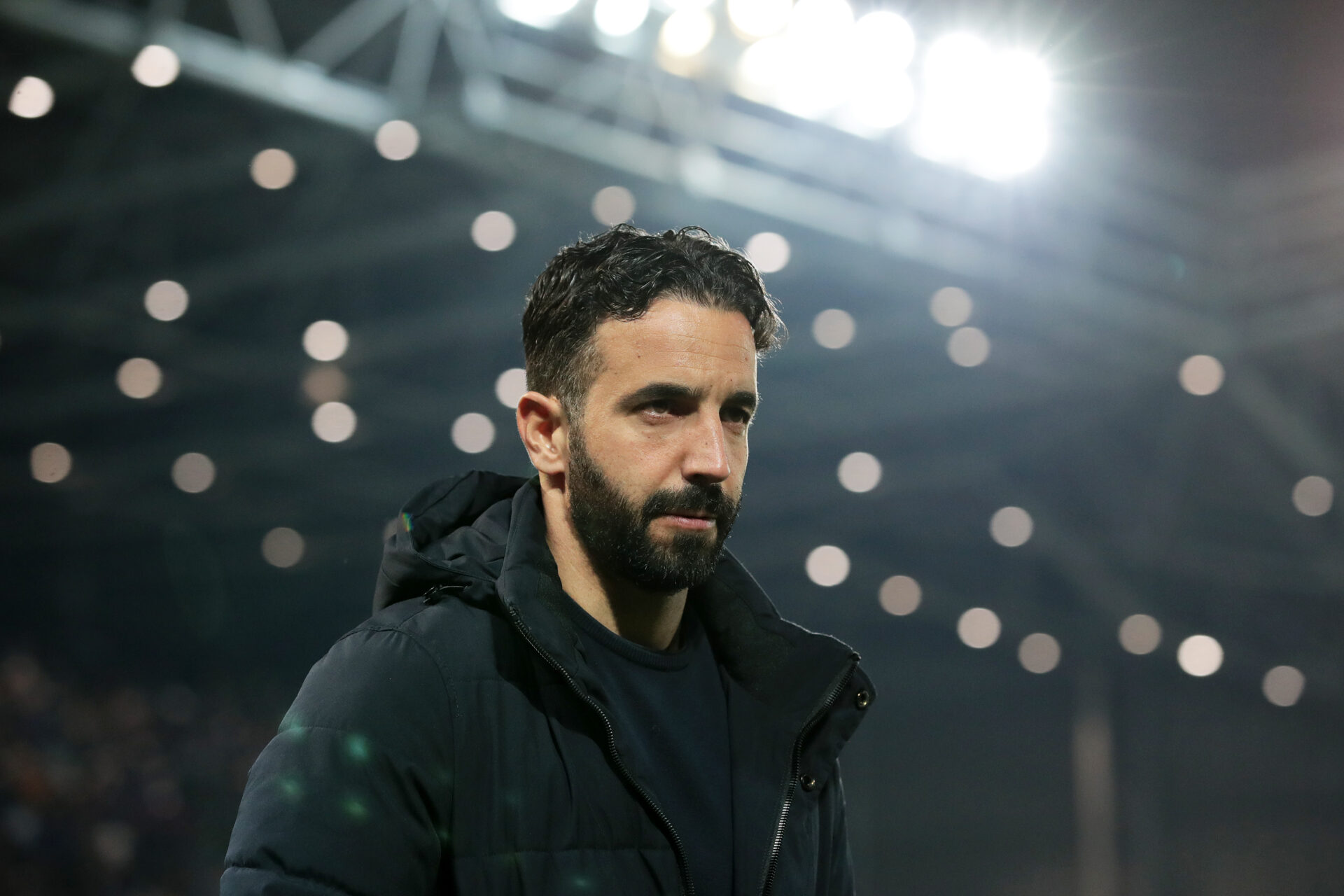

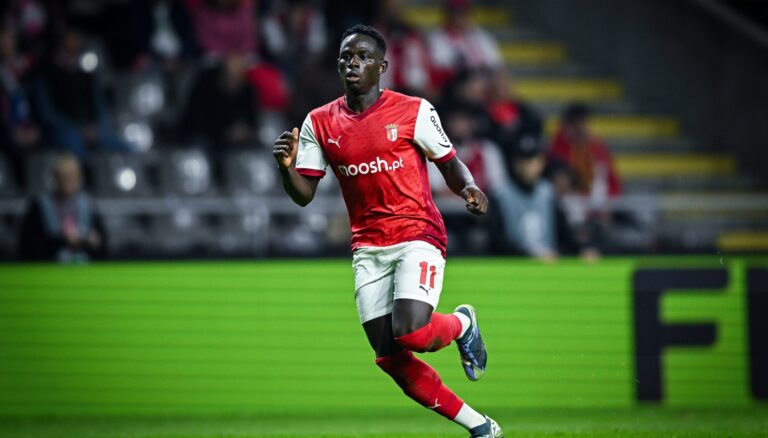
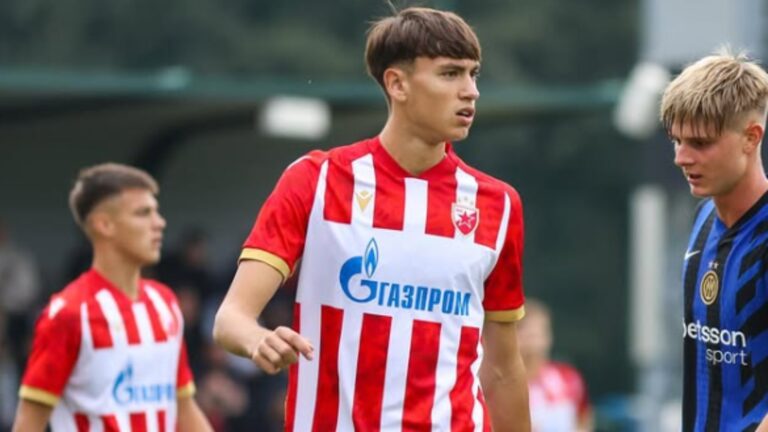
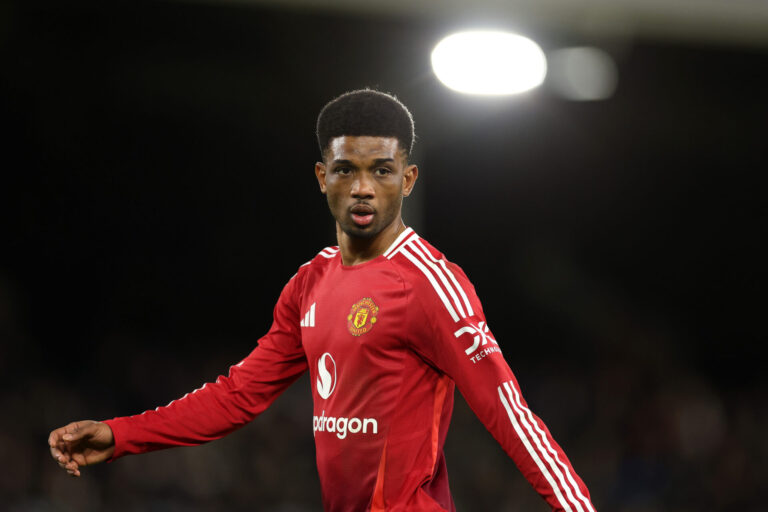
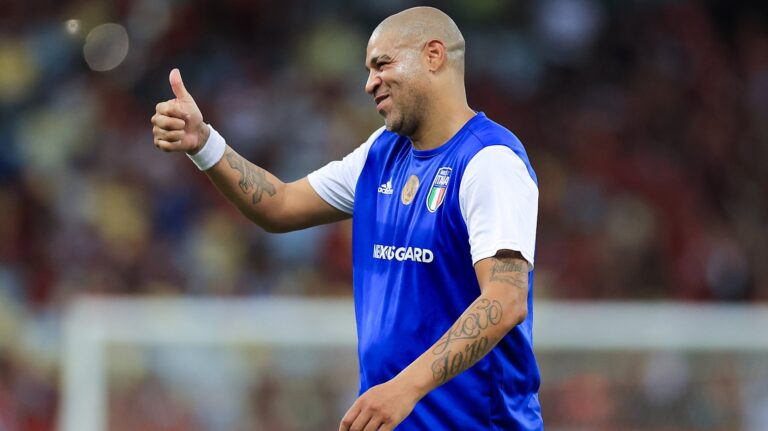
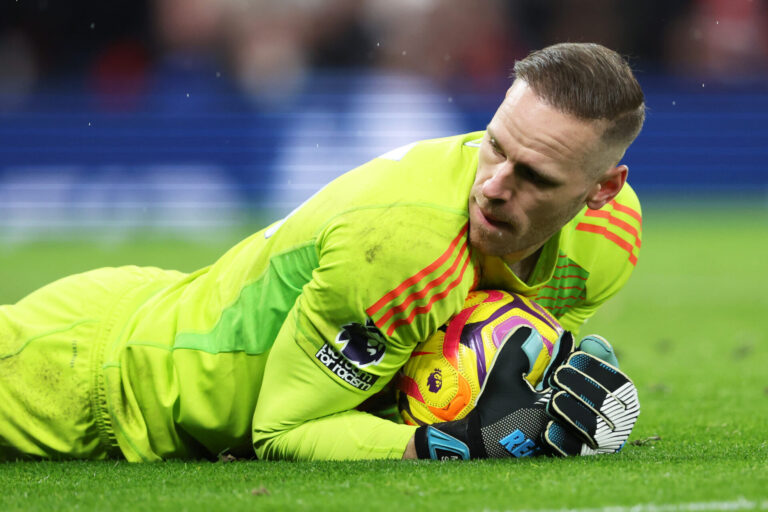
2 Comments